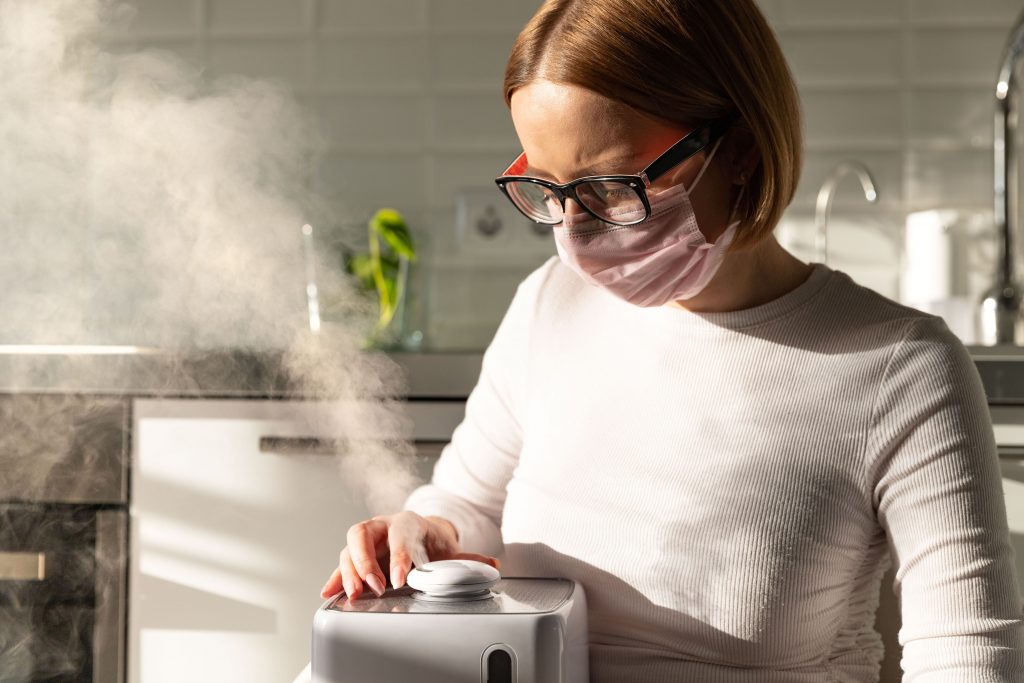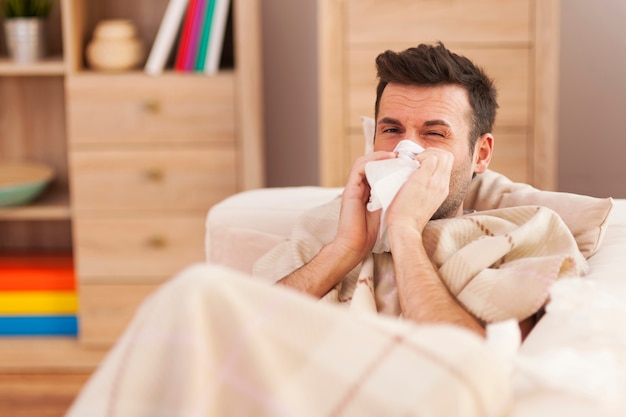
Both humidifiers and dehumidifiers are systems found in many households across the United States. The first steam removers were developed in the 1920’s. In 1934, a patent was placed on a humidying device. When you live in a dry climate, the humidity level in your home may drop drastically depending on the season. Whether the climate is hot or cold, dry air can cause issues in both your health and your home. When humidity levels are inadequate, infants may experience shortness of breath. With too much humidity, the wood furniture throughout your home will begin to deteriorate.
Like all household items, you must learn to use a humidifier properly. Releasing too much moisture into the air may cause dirt and pesticides to congregate in the foundation of your house. When you learn how to measure and operate this machine, you will see great improvement in the air quality throughout your home. Once you get your device up and running, you may notice that a white dust is produced in the humidifying process. When white dust starts accumulating on the surfaces of your home, you may be curious as to where it is coming from.
What Is Humidifier White Dust?
When humidifiers are active, they produce a white dust as a byproduct of the humidifying process. This white dust is the accumulation of common minerals found in tap water. Although certain humidity systems have embedded technology designed to reduce the production of white dust, others have difficulty filtering the dust out of the air.

The white dust being released is a combination of magnesium, calcium, and other components found in water. Fortunately, there are many steps you can take to get rid of the white dust coming from your humidifier. In this article, we will discuss the nine routine maintenance steps that can be completed to help you eliminate white dust from your home.
9 Routine Maintenance Steps to Eliminate White Dust
Like any piece of equipment, humidifiers need maintenance. Not only do they need to be maintained properly to continue operating efficiently, they need adequate maintenance to reduce the amount of white dust they release on a daily basis. Every home device requires regular maintenance. Maintenance steps are tasks you complete on a regular basis to help your equipment stay in a good condition. In this article, we will discuss nine routine maintenance steps that help eliminate white dust in your home.
1: Empty the Reservoir Once a Day
Humidifiers come in many different shapes and sizes. Since they vary in sizes, the reservoir in humidifying devices could be quite small or rather large. It is easy to empty the reservoir; simply detach the component from the unit and empty it into a sink or lawn. If you want to clean the tank thoroughly, you can do so with white vinegar.

Allow white vinegar to soak in the tank for thirty minutes. After the vinegar soaks, scrub the casing with a sponge or brush. When you empty and scrub the reservoir on a regular basis, you can ensure that the water being held in your unit is not contributing to the white dust that is produced.
2: Use Distilled Water To Fill Your Humidifier Tank
Using distilled water to fill your humidifier is a non-negotiable. Distilled water is affordable, and it makes a big difference in your air quality. Distilled water inevitably has a lower mineral content compared to tap water. When there are less minerals present in the water, there are less minerals that will be mineralized into dust particles. Distilled water helps maintain the efficiency of the unit.
3: Keep the Humidity in Your Home Between 40% and 50%
The maximum amount of moisture that the air in your home should contain is 40% – 50%. Too much humidity makes it difficult for your body to cycle air properly. In addition, excess moisture attracts dirt, dust, and unwanted pests. Too little moisture in the air can lead to dry skin and sore throats.

Both superior and inferior humidity levels can negate your ability to sleep well. When your breath does not come easily, you will experience restlessness throughout the night. When a humidifying device is overworking or underworking, it can cause water to be processed at an amplified pace. Too much water cycling through the humidifying process can contribute to additional white dust being released into the home.
4: Buy a Demineralization Cartridge
Utilizing a demineralization cartridge is an easy way to eliminate the dust circulating in your home. This cartridge can decrease dust particles by over 50%. By utilizing a demineralization cartridge, the water cycling through the humidifier will dispose of the minerals in the water that combine to find white dust. If you choose to use demineralization cartridges, it is important to replace them every four to six weeks when the humidifier is in use.

5: Change the Humidifier Filters Regularly
If you want to ensure that your humidifier is filtering water and air as thoroughly as it should, you cannot forget to change the filter every three months. Because many humidifiers are used constantly throughout the day, they can quickly accumulate dust and experience clogging. In some devices, you do not have to use a disposable filter.
Determine whether your filter needs to be cleaned or replaced. Simply clean reusable filters every few months to get maximum usage out of each piece. The process of cleaning a reusable filter involves the submersion of the filter into distilled water. If you’re properly dusting and vacuuming your home weekly, the filter in the system will remain clear for a longer period of time.
6: Clean the Humidifier According to the Manufacturer’s Instructions
All humidifiers are handled differently. Make sure you treat your unit the way it was designed to be taken care of. Do the manufacturer instructions note that you have a disposable or reusable filter? What frequency does the manual suggest cleaning the unit? How do you properly store the unit? Since humidifiers can vary dramatically in size and functionality, you must follow the specific guidelines outlined by the instruction manual.

7: Change the Water in the Tank Frequently
When you change the water in your unit on a daily basis, you can ensure stagnant water is not compromising your air quality. When you don’t change the water, debris and mold may congregate on the surface of the water tank. Most people do not prefer that the water in their system sits unused for days at a time. Before you turn your unit on, make sure that it has been refilled with fresh, distilled water. Water that has been sitting stagnant for days on end may collect film on the surface.
8: Ensure That You Properly Store it Until the Next Use
When you are planning on putting your humidifier into storage, make sure that all components are air dried properly. By putting your device into a box or container, you can ensure that dust will not be collecting directly on the surface. Before putting the humidifying system away, make sure that it has been cleaned with extreme precaution. Any lingering dust or water has the capability to mold quickly. Clean, dry, and cover the system properly to keep your device in top-notch condition.
9: Consider Replacing It With a New One
If you are taking great care of your humidifier but continue to see white dust particles released throughout the home, it may be time to consider buying a new humidifier. Most people expect to utilize their humidifier for 2-5 years before replacing it. If your humidifier is from a generic brand, it will likely not last through a single season of regular use. The best humidifier brands take into consideration the size of your space and the nature of your climate. In addition, the best humidifying devices are embedded with demineralization cartridges to improve your air quality.
Does the Humidifier White Dust Negatively Affect My Health?
Many people are curious to know if the white dust from humidifiers is dangerous for their overall health. Unfortunately, the answer is yes. Many young children and infants are not able to properly dispose of the dust that enters their nose and mouth. This white dust could cause an increased amount of drainage in the nose and throat. Teens and adults that suffer from asthma may see symptoms if they do not monitor the dust release. If you have a different repository concern, take the proper steps to minimize dust release.

For many healthy adults, the dust from humidifiers is not inherently harmful. The dust is primarily a source of annoyance. This dust accumulates on surfaces across the entire home. As a result, white dust increases your need to dust and vacuum regularly.
Conclusion
Humidifiers are amazing devices that help better the quality of air in a household. Many states such as California, Arizona, and Colorado need household humidifiers to stay healthy. Humidifiers help to maintain a level of moisture in the air that eliminates the risk of sore throats, dry skin, and respiratory issues.
Like all household items, there are sometimes negative consequences of using a humidifying device. These devices can produce a white dust that accumulates on surfaces throughout the home. Although the white dust is relatively harmless, it can be a risk to those with respiratory sensitivities. By adhering to the nine maintenance steps above, you can ensure that you and your household remain happy and healthy.
